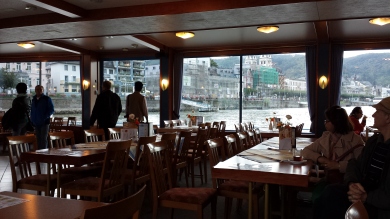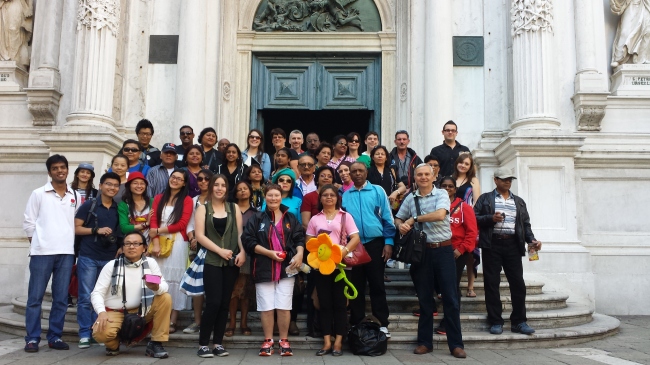In the last century, medical research and practice has perhaps been enhanced more so than during any other period. A widely proliferated suggestion is that this has been due to the advances made in medicine during times of war. Recent scholarship challenges this observation, instead arguing that wartime allowed for greater integration of existing ideas. William H. Schneider for example has reasoned that far too many attempts have been made to observe the medical progress made in wartime, and identifies the danger of viewing military medicine as being interrupted by periods of peace because civilian medical practice is then overlooked.[1] Haemotological research for example, was already being undertaken long before 1914 as well as after the war had ended. Blood transfusion is an idea which can be traced back through the centuries, with fluctuating interest during the seventeenth and eighteenth centuries, but which by the 1820s was restored when British physician and physiologist James Blundell carried out human to human transfusions with mixed results and conducted several lectures on the subject. In 1901, Karl Landsteiner identified three of the main blood groups, followed by the discovery of a fourth the following year by von Decastello and Sturli, again stimulating renewed interest in the practice.[2] By the outbreak of war in 1914, there had been substantial research into blood groups and transfusion demonstrating civilian efforts to develop in the field, yet no mass international amalgamation of theory. A. D. Farr notes that there was a great deal of duplication during this period, especially with disagreements over the designation of blood groups.[3] War allowed the integration of ideas but in addition, lack of congruity over method to treat shock as well as haemorrhage resulted in widespread transfusion experimentation but limited success due to the time taken to group match, resulting in deaths due to agglutination. By World War Two however, transfusion had been simplified and the logistics were in place to back up such large-scale practice, such as efficient group matching, storage without risk of coagulation, as well as ensuring adequate supply where it was required. This suggests that the inter-war period had produced greater advances than had been seen between 1914 and 1918. It could be that the main impact of World War One was that the many shortcomings of the procedure were recognised, initiating further development. This short essay will therefore examine the extent of development in times of peace as well as war to demonstrate that research and development into transfusions was relatively consistent before World War One, as well as demonstrating how far improvements were confused by this war in particular, resulting in continuous improvements thereafter.
It must not be forgotten that medical procedure and care has and always will be utilised to treat the population as a whole, not just as a result of injuries sustained in war. Schneider suggests that before the twentieth century, blood transfusion was somewhat of a curiosity[4], yet at the same time, one common cause of death due to blood loss prior to this was that of haemorrhage during child birth. When Blundell carried out his experiments in the 1820s, his ideas on blood transfusion were no doubt influenced by the curiosity and attempts of preceding centuries, but moreover because of his professional capacity practicing and lecturing on midwifery.[5] His work did not go unnoticed and following his lectures, several instances of physicians using his methods were reported with enthusiasm in the press. In 1826, The Morning Post reported that a woman who had haemorrhaged during childbirth was attended by a Mr. Doubleday of Blackfriars. It was believed that the woman concerned had only a few hours to live. However, having read of Blundell’s procedure in the Lancet, Doubleday was ‘determined to make a trial of it. He accordingly took a quantity of blood from the arm of her husband, and having made an opening of the median vein in the right arm, proceeded to inject the blood with a syringe in the manner described.’[6] After injecting the patient with an estimated fourteen ounces of blood, the treatment was discontinued due to the patient suffering from slight pain in the head, and within a short time the patient was apparently up and walking, with no further side effect. Another such case was reported in 1828 in The Lancaster Gazette whereby the patient was treated by the transfusion of fifteen ounces of blood by ‘patent syringe and tube’ from a ‘healthy stout man’ who had been revived and showing signs of making a full recovery.[7] There were other similar cases reported around the same time, including one by The Standard in which a physician used a ‘common bone syringe’ to transfuse blood to a heavily pregnant woman after she had lost a considerable volume of blood due to a burst varicose vein on her leg.[8] It would be reasonable to suggest therefore, that blood transfusion had indeed been improved without the influence or war in its earlier stages of development, not merely as a curiosity as Schneider asserts, but was instead implemented as a genuine medical practice, particularly in the field of obstetrics.
Following these early procedures, Farr notes there was little continued interest until around 1901, following the publication of Landsteiner’s findings.[9] Indeed, the suspicious absence of further British newspaper reports much after 1828 suggests that there were far more unsuccessful procedures than the successes highlighted above. However, there was continued interest with studies undertaken in Britain in the late 1840s by two doctors accounting for some eighty transfusions between them, and with the refinement of the modern hypodermic needle, Schneider notes that all manner of fluids were tested in Europe and North America, including reversion back to animal blood trials, as well as milk and saline solutions.[10] Most importantly however, he notes that there were only four transfusions reported during the American Civil War[11], perhaps demonstrating that civilian health as well as curiosity in the procedure had produced far greater instances of transfusion than a contemporary war had. Of course, further investigation into how far American knowledge of transfusion compared to that of Britain at the time would be required in order to substantiate this idea, however peacetime efforts were evidently ongoing. Shortly after Landsteiner’s discovery, a procedure was developed in response to the problem of coagulation by Alexis Carrel which involved transfusing blood by anastomosis, which US surgeon George Crile subsequently attempted with some success following Carrel’s move to the US from France. This procedure in its original concept was difficult and took a long time to complete and so did not become widespread, but improvements were made to it, such as Crile’s silver cannula to allow free flow of blood from artery of donor to recipient’s vein.[12] Continued US experimentation produced new equipment for transfusion, including the Kimpton tube, a paraffin coated glass storage vessel which prevented coagulation.[13] Yet the success of the transfusion during the impending war would be hampered despite these new methods due to agglutination as well as haemolysis, the inevitable results of group matching being predominantly disregarded. Nevertheless, progress had been made and, progress it must be added, which was made before the war had even begun.
When war broke out, there was however little room for such a complex procedure as Carrel had demonstrated in wartime conditions, despite the improvements made by Crile, particularly since the volume of blood being taken and administered could still not be accurately measured. Although studies in Britain in the 19th century and in the US at the turn of the century had shown that the best replacement for lost blood was in fact blood, there were still those whose preferred replacement was saline. By 1915, Canadian surgeon L. Bruce Robertson demonstrated American transfusion techniques in Europe, both by using the syringe and cannula system developed by Edward Lindeman, published in 1914, as well as by multiple stopcock syringe developed by Lester J. Unger,[14]which he developed in 1915 as an improvement over Lindeman’s system. This allowed blood to be measured and transfused from donor to recipient, at the same time administering saline to the donor, reducing handling of the equipment and preventing dislodgement of cannulas from the vein, as well as limiting the risk of clotting.[15] Indeed, in his follow-up, Unger describes his development of improved apparatus and method following forty further transfusions, which utilised only one record syringe, negating the necessity for assistants to clean syringes, as well as the use of paraffin on tubes to prevent coagulation. Instead, the blood was kept cool by spraying the barrel of the syringe with ether as suggested to him by Dr. Charles A. Elsberg of the Mount Sinai Hospital.[16] It was perhaps a coincidence that the addition of sodium citrate to red blood cells to inhibit coagulation was simultaneously re-discovered in 1914 in Argentina, Belgium and the US,[17] but the pace with which the details of the process was proliferated was not. As we have seen with Robertson’s introducing techniques to Britain and France, war allowed ideas to spread and the same applies to this process, so much so that by 1916 Canadian Army Medical Corps Major Edward Archibald had written ‘that we have in the citrate method a means of transfusing blood so simple that it can be done by a junior medical officer with the instruments at hand in any clearing hospital.’[18] Yet the allies continued to use paraffin coated Kimpton tubes without the addition of sodium citrate because of uncertainty regarding the addition of substances to blood.[19]Therefore, it can be seen that although new methods evolved and were available to doctors at the front, they were not popular due to personal opinion, the simplicity of alternative methods, as well as limited understanding of the latest developments made away from the front.
Perhaps the most important breakthrough by the war’s end was the agreement by all nations that blood was the first choice to treat haemorrhage as well as shock. However, the war’s greatest impact on transfusion was perhaps that associated problems had been identified and would be overcome in the most part during the inter-war years. New methods which addressed the issue of faster group matching, as well as storage and supply, all meant that the practice of blood transfusion was far more advanced by World War Two. In 1921, Percy Oliver, secretary of the Camberwell Red Cross Association and three of its members responded to a plea from King’s College Hospital for blood donors. Oliver formulated the idea of assembling a panel of on call volunteers for such purposes. Thirteen such calls were received in 1922, 1300 in 1927 and 6,000 calls by 1938 with membership of about 2700, resulting in the Voluntary Blood Donors Association being formed in 1932.[20] Indeed, in 1937, Canadian Dr. Norman Bethune was directing a blood transfusion service funded by the Canadian public in Spain during the Civil War. His service followed the US bank system and, according to the Daily Mirror was supported by 3,500 donors in Barcelona and Madrid, each being tested for group and disease prior to the blood being stored in milk bottles and refrigerated, thereafter being distributed by refrigerated trucks from collection to distribution centres just behind the fighting lines.[21] Later in the same year, a woman was reported to have suffered internal haemorrhage at Croydon hospital, resulting in the loss of three pints of blood. A somewhat nonchalant tone asserts that ‘Blood transfusion is common enough; somebody is weak through loss of blood, blood from a willing donor is pumped into the veins,’ but with a different tone and bold typeset the article exclaims; ‘but this woman had a transfusion of her own blood!’ This had been collected from her abdomen, filtered through sterilised muslin and then reintroduced into her veins, making the woman ‘one in a million.’[22] Peacetime development in testing, storage and supply had not only been used efficiently to save lives in conflict but another new technique had saved the life of an ordinary citizen; moreover, the practice of transfusing blood had also become a routine procedure. It was due to Oliver’s humble panel of donors as well as Bethune’s efforts in Spain that the Emergency Blood Transfusion Service was enabled to follow such example from 1939 onward, capitalising upon its ability to organise mass appeals and blood bank operation, meaning that during the course of the war, a million people made up to two million donations.[23]
Between the sixteenth century and 1826, the idea of transfusion had already changed from mere curiosity to one of a true medical procedure to save lives, it also utilised the syringe method instead of direct transfusion developed much later by Crile to prevent coagulation but the former method remained more popular than the latter. Between 1826 and 1914, some curiosity continued resulting in varied experimentation as Schneider suggests, but with Landsteiner’s discovery in 1901, haematological research began in earnest, so too did improved methods for transfusing blood. World War One did have an impact on the proliferation of ideas, exemplified by Robertson’s demonstrations, but which at the same time restricted progress simply because the methods were often too complex and the facilities were not available to support such delicate specialism under wartime conditions. It could be suggested that the inefficiencies of transfusion during World War One, (which were overlooked at the time, the priority being to transfuse in the hope of saving life), acted as the impetus for continued research during the interwar years, resulting in blood banks and large-scale donor drives. By the Second World War, support, storage and logistics for large scale operations were coupled with uncomplicated technique due to the shortfalls seen during the last war, a time when there was much confusion as Farr suggests, possibly because there were so many new ideas which had not been fully developed by the time war came, or indeed new ideas developed for the requirements of war, such as US doctor Walter B. Cannon’s studies into shock with British medical officers in France.[24] From this short examination of the development of blood transfusion, it may be reasonable to suggest that the principles already existed due to civilian efforts by 1914, and although the war had spread these ideas, it had also complicated them. Perhaps the main impact this war had had on the procedure was to highlight the problems of largely pre-existing methods and clarify division of opinion, particularly the importance of group matching. By the Spanish Civil War, a blood transfusion service had utilised the best of this development and proved that blood transfusions could be safe, efficient and performed by medical orderlies and nurses. This in turn provided the necessary model for the next world conflict in which blood transfusion would save the lives of thousands, on both the frontlines as well as on the home fronts. War therefore had little direct impact on the development of blood transfusion between 1914 and 1918, but indirectly it facilitated further peacetime research, contributing to the success of Bethune’s service in Spain, which in turn provided a model which the world could follow from 1939 onwards.
[1] William H. Schneider, ‘Blood Transfusion in Peace and War 1900-1918’, Social History of Medicine, 10, 1, Oxford, 1997, pp.105-106.
[2] A.D. Farr, ‘Blood Group Serology – The First Four Decades’, Medical History, 23, 1979, p.215.
[4] Schneider, op.cit., p.105.
[6] Unknown, ‘Successful Case of Transfusion of Blood’, The Morning Post, 3rd Jan 1826, Issue 1717, 19th Century British Library Newspapers: Part II.
[7] Unknown, ‘Miscellaneous – Successful Case of Transfusion of Blood’, The Lancaster Gazette and General Advertiser, for Lancashire, Westmoreland, &c., 26th Jan 1828, Issue 1389, 19th Century British Library Newspapers: Part II.
[8] Unknown, ‘Multiple Commerce Items – Successful Transfusion of Blood’, The Standard London, 10th August 1827, Issue 71, 19th Century British Library Newspapers: Part II
[12] Schneider, Ibid., pp.110-111.
[15] Lester J. Unger, ‘A New Method of Syringe Transfusion’, Journal of the American Medical Association, 64, 7, 1915, pp.582-584.
[16] Unger, ‘Recent Simplifications of the Syringe Method of Transfusion’, Ibid., 65, 12, 1915.
[17] Schneider, op.cit., pp.116-117.
[18] Edward Archibald, M.D., ‘A Note Upon the Employment of Blood Transfusion in War Surgery’, Wilderness and Environmental Medicine, 13, 2002, p.215.
[19] Schneider, op.cit., p.118.
[21] Unknown, ‘Bottled Blood Saves Thousands on Spanish Fronts’, The Daily Mirror, 3rd March 1937, p.1.
[22] Unknown, ‘All Girls Together: Here’s One in a Million; Her Life Saved by Transfusion of Her Own Blood, Daily Mirror, 1st Dec 1937, p.16.
[24] Saul Benison, A. Clifford Barger, and E. L. Wolfe, ‘Walter B. Cannon and the Mystery of Shock: A Study of Anglo-American Co-operation in World War 1’, Medical History, 35, pp.217-249.







